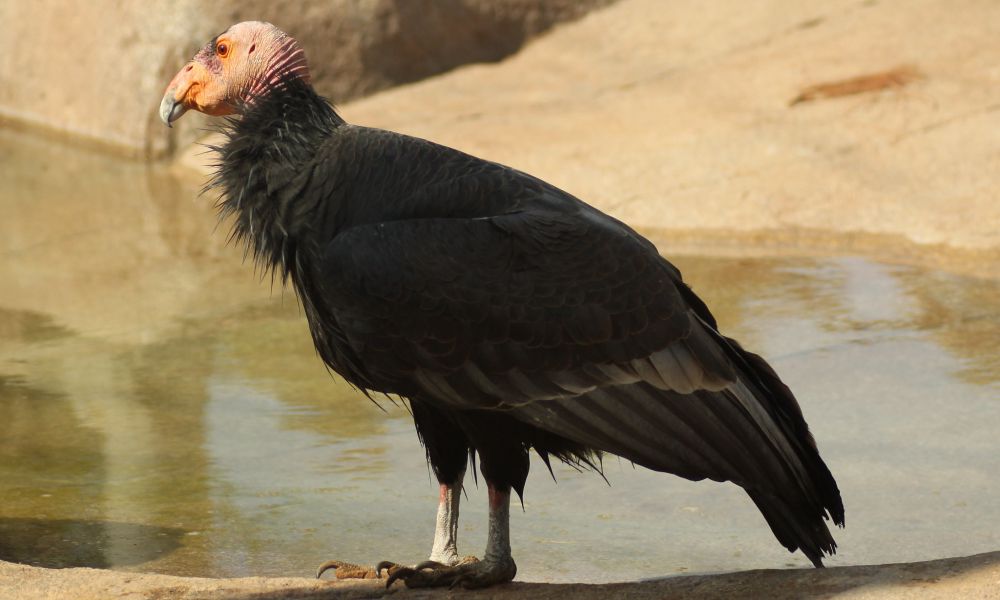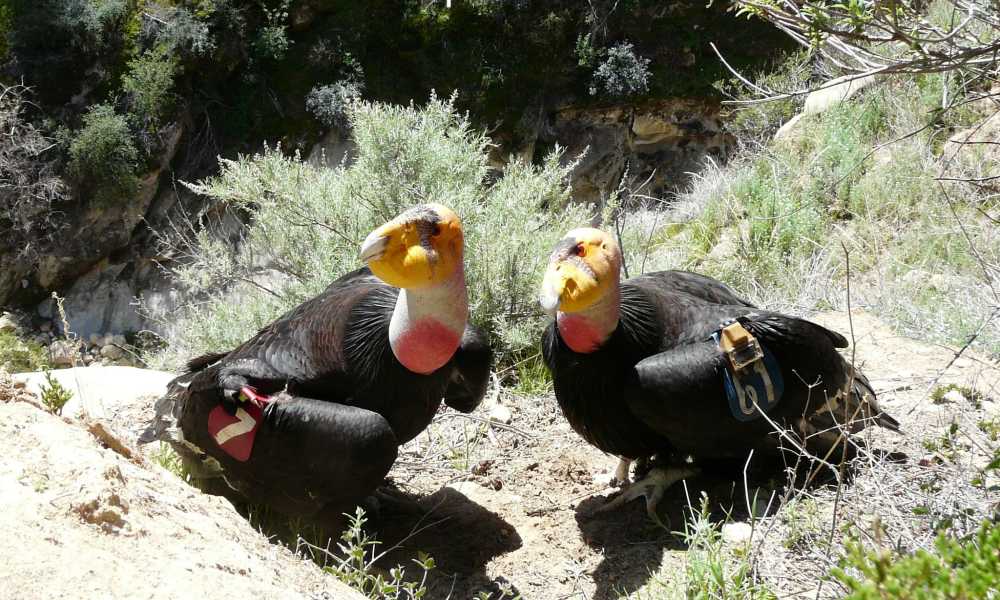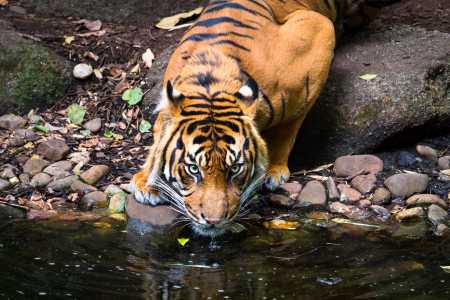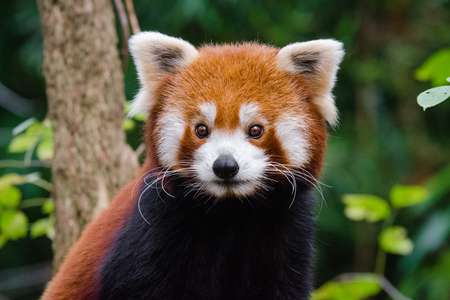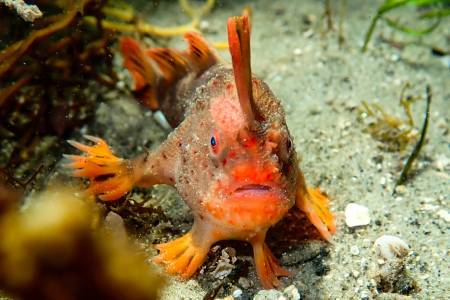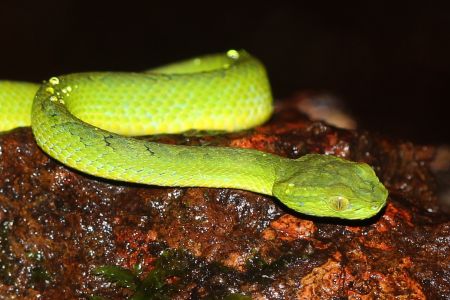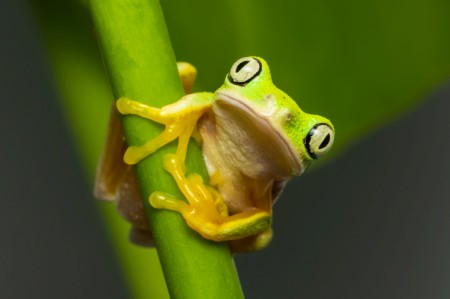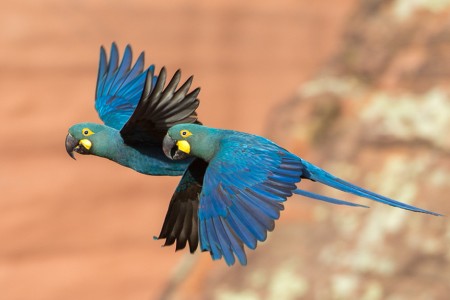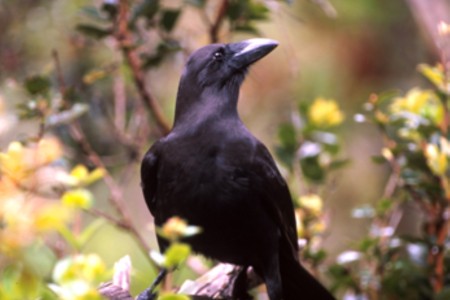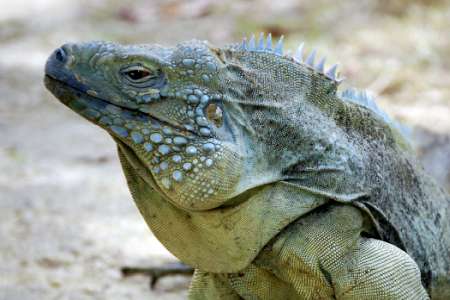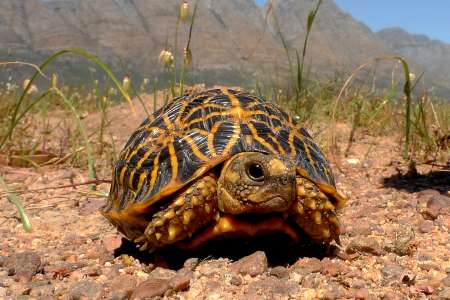
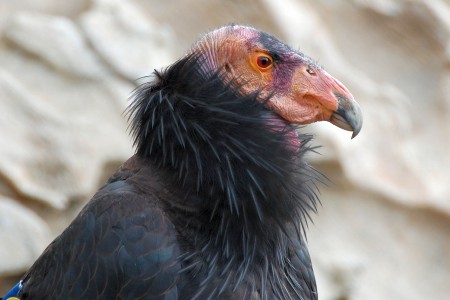
California Condor
Doing Better - But Still Needing Help

INTRODUCTION
California Condor (Gymnogyps californianus) is an awesome species and is recognized as one of the world’s rarest birds. With its massive wingspan, it stands out as one of the largest of all flying birds. Watching it effortlessly soar is worth the trip to see it, and this behavior captures the attention of birdwatchers and researchers alike.
Scientific Classification
• Kingdom: Animalia
• Phylum: Chordata
• Class: Aves
• Order: Accipitriformes
• Family: Cathartidae
• Genus: Gymnogyps
• Species: G. californianus
Appearance and Behavior
California Condor’s plumage is mainly black, with white on the underside of the wings. The unfeathered head can become flush with color, turning a deep red. Researchers believe that these color changes communicate emotional states to other condors.
Adult condors weigh between 17 to 25 pounds (7.7 – 11.3 kilograms). One of the most distinctive features of the California Condor is its sheer size and wingspan from 9 to 9.5 feet (2.7 – 2.9 meters), making it one of the widest among all bird species. Their enormous wingspans can capture thermal currents, soaring and gliding to high altitudes, covering distances of over 150 miles in a single day. Using thermal currents is a very efficient flight strategy that allows the bird to conserve energy while scanning the ground for carrion.
Habitat and Ecology
Indigenous to North America, California Condor are found in rocky shrubland, coniferous forests, and oak savannas in California, Arizona, Utah, and Baja California in Mexico. Under natural conditions, these birds can live up to 60 years, a remarkable avian lifespan. They primarily consume carrion, specifically large dead mammals such as deer and cattle, and marine mammals like seals or whales.
Mating for life, California Condors breed once every other year, the female producing a single pale qua-colored egg that both parents incubate. The incubation period lasts between 54 and 58 days before the egg successfully hatches. After hatching, the devoted parents intensely care for the chick for approximately one to two years. Despite being one of the longest-living birds, this time-consuming dedication is a factor that limits the species’ reproductive rate and population growth. This is a serious impediment that, in part, has led to their near extinction.
Conservation Status
In the mid-1980s, the wild population dropped to just 27 birds living in one county of California. In 2020, it was listed as Critically Endangered on The IUCN Red List of Threatened Species. Extraordinary conservation efforts, including captive breeding and release programs, have gradually increased their numbers, demonstrating that important wildlife conservation initiatives can succeed.
THREATS TO CALIFORNIA CONDORS
Beginning during the California Gold Rush, when they were extensively hunted, the California Condor has faced severe threats to its existence. These continued into the twentieth century with a combination of factors, including habitat loss, lead poisoning, and micro-trash ingestion, until, in the 1980s, the population was on the brink of extinction. At that time, the 22 California condors in the wild were captured and placed into captive breeding programs. The first of those bred in zoos were released in the early 1990s, and since then, many more have followed. While this was great news, it certainly did not put them out of extinction danger, and the low genetic diversity resulting from their small population has only increased their disease susceptibility.
Avian Flu
The avian flu virus is highly pathogenic avian influenza (HPAI). In the United States alone, as of February 2023, the U.S. Department of Agriculture (USDA) confirmed that HPAI is present in 47 states and affects over 58 million birds. HPAI is a very contagious virus that can cause severe illness and death in birds. The virus is spread through contact with infected birds, droppings, or saliva.
In May 2023, the National Audubon Society reported that 20 California Condors perished in northern Arizona and southern Utah. It is feared that this is only the beginning and that the illness will spread into other condor populations, negating many of the successes of the past 40 years of restoring the condor populations.
Lead Poisoning
Lead poisoning was the top issue that fueled the rapid decline in populations of the California Condor during the 20th century. Unfortunately, it continues to be a leading threat to their survival. The condors often scavenge on the carcasses of game animals shot with lead ammunition. In doing so, they ingest toxic lead fragments, which lead to poisoning and often death. Some efforts have been made to restrict the use of lead ammunition, but it is an understatement to say that enforcement is challenging, and the threat largely continues unabated.
Habitat Loss
The California Condor is profoundly affected by the considerable and continuous loss of their natural habitats. This habitat degradation, largely due to human-caused deforestation and expansive urban development projects, has significantly reduced their habitat. These encroachments exacerbate the other challenges associated with the survival and reproduction of the species. Reduced habitat limits the availability of nesting sites and affects the diversity of food resources, ultimately influencing the condor’s overall health and ability to thrive.
Micro-trash Ingestion
The environmental challenge micro-trash is to the condor populations is a direct result of increased human activity within or near their habitats. Politely, let’s just say that some people could do a much better job of not carelessly discarding small pieces of refuse, like fragments of glass, pieces of metal, and plastic particles, which end up in the digestive systems of these majestic birds. The California Condor is facing yet another threat from ingesting micro trash, much of it left on purpose, and it isn’t just affecting the adult condors. Vulnerable chicks also ingest this dangerous trash during feeding. The consequences are grave, leading to a variety of severe health issues, which can run the full gambit from substantial discomfort to impeding their ability to feed properly, all the way, in extreme cases, to death.
Disease
Beyond avian flu, the California Condor is exposed to an array of dangerous diseases, including but not limited to avian cholera and the West Nile virus. These health threats are often introduced to their habitats by migrating species carrying such illnesses and pose a significant risk to the well-being of these birds. Avian cholera is a highly contagious bacterial disease that can kill off large numbers of birds quickly, while lead poisoning. West Nile virus, transmitted via mosquitoes, can cause fatal neurological disorders.
Predation
Natural predators, including golden eagles and other large bird species, pose an ongoing threat to the survival of the California Condor. These predators have been known to target and attack eggs and young condors, which substantially impairs the population’s ability to sustain its numbers and achieve growth. Humans have also contributed to this predation by killing condors in rare but impactful instances. Although these cases are significantly less frequent than natural predators, each instance of human-induced harm presents a considerable threat to the species due to their low population. The overall impact of these multiple sources of predation presents a genuine obstacle to the ongoing survival and recovery efforts for the California Condor.
Collision with power lines
With their formidable size, colliding with power lines does occur. Though this is not thought to be frequent, with such low numbers, deaths and injuries of this sort are another threat to the California Condor. With a wingspan of up to 9.5 feet (2.9 meters), colliding with power lines during flight will occur.
In conclusion, the California Condor faces multiple threats that must be met head-on. The task may be difficult, but the reward of preserving this iconic species is well worth the effort.
IMPORTANCE OF CALIFORNIA CONDORS
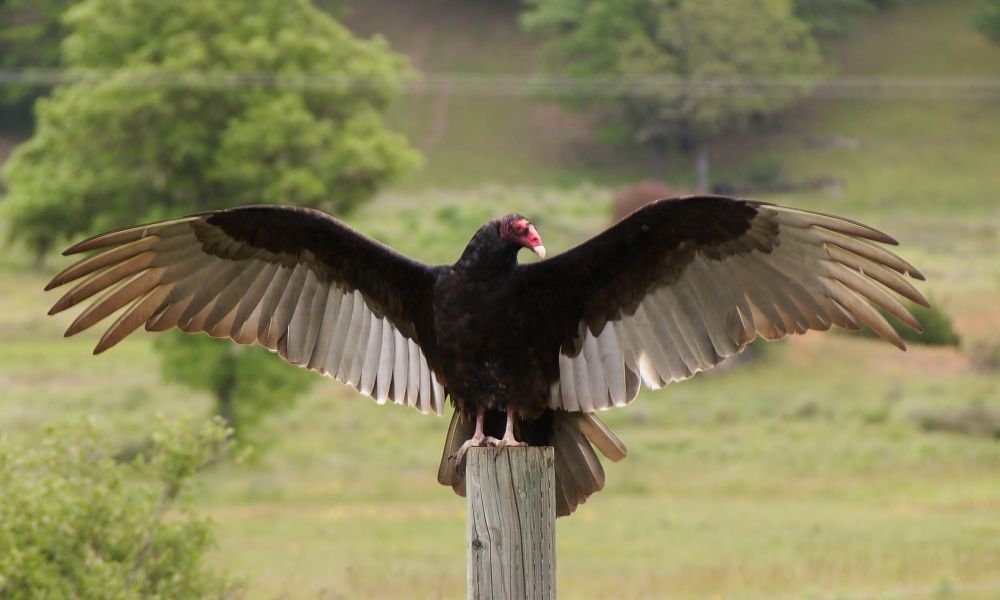
Effects on Climate Change and Associated Costs
When considering the tiny population of the species left in the wild, the California Condor might seem to have a minimal direct impact on climate change. If it were to go extinct, however, further disturbances to the ecosystem balance could indirectly affect climate change mitigation.
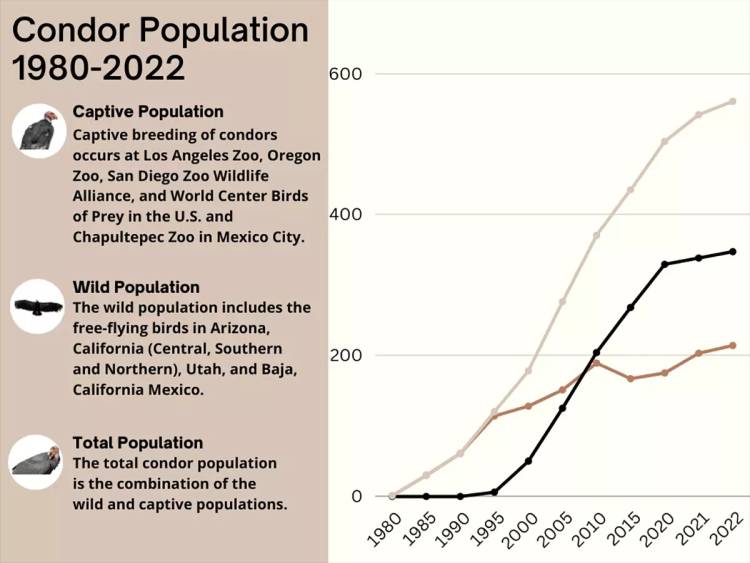
Credit: Olivia Beitelspacher/USFWS
All ecosystems, including those where condors are found, are part of the larger biosphere. Disruptions of them reduce their ability to absorb carbon dioxide, affecting the overall carbon cycle. With populations of 561 worldwide and about 214 in captivity and 347 in the wild, this species is not a huge player affecting global climate change. As part of the whole, the degradation of all species is additive and is damaging our planet. Losses of biodiversity increase the vulnerability of ecosystems to climate change and necessitate additional mitigation strategies, which come at substantial costs.
Financial Costs of California Condor Extinction
Extinction of this species would not only impact the local ecosystem but also increase direct and indirect costs, including those for conservation, legislative enforcement, and potential ecotourism opportunities of other species that lack the services that these birds provided and themselves fall into difficulties.
The ongoing preservation efforts for the California Condor require substantial resources for research, protection efforts, and captive breeding programs. These funds typically come from international conservation organizations and government bodies. The latter is funded with tax dollars paid by citizens. With the condors, as with other species, the costs tied to conservation efforts increase as a species moves closer to extinction, requiring more intensive, innovative, and costly strategies to save it.
Impacts on Local Ecosystems
The California Condor is vital in maintaining healthy local ecosystems by serving as a crucial scavenger consuming carrion. Left unattended, carrion poses serious repercussions for the ecosystem, with the decaying matter becoming a breeding ground for disease-causing bacteria and the potential spread of harmful pathogens. Without scavengers to remove and consume the carrion, there is a threat to the health of the area’s wildlife and human populations. In essence, the carrion becomes an environmental concern and a disruption of the environment.
At its worst, this can lead to unforeseen disease outbreaks, an alarming surge in the population of other scavengers, and the unsettling disruption of essential local food chains, causing a ripple effect throughout the entire ecosystem. The need for the California Condor and other species that feed on carrion is part of the balance needed to prevent disease outbreaks and disrupt local food chains.
Legislation and Enforcement
As previously mentioned, protecting endangered species like the California Condor involves developing and enforcing legislation, monitoring species’ populations, and implementing protective measures. The tasks are not minimal and require significant resources and personnel funded by taxpayers. As the California Condor’s population dwindled in the past, more funds were allocated for its conservation, impacting the allocation of resources that could be used elsewhere. While there have been great strides in preventing the extinction of the species, the still very low populations require continued vigilance and funding for them.
Loss of Ecotourism Potential
The California Condor, with its endangered status and as the star of the show with its beautiful aerial acrobatics and soaring, presents an irresistible lure to ecotourists and bird enthusiasts who journey from across the globe to observe these magnificent birds flying against the backdrop of the rugged Californian landscape.
The loss of the California Condor would signify not only a biological loss but also a crucial economic setback. Revenue generated from tours, accommodations, and related services associated with birdwatching and conservation activities would disappear, affecting livelihoods in local communities. These economic implications resonate on a global scale. According to a report by the United Nations World Tourism Organization (UNWTO), ecotourism – tourism directed towards exotic, often threatened, natural environments – is one of the fastest-growing sectors within the tourism industry, contributing billions of dollars to the global economy each year.
In short, the conservation of the California Condor has implications for global economies and average citizens. Its crucial role in biodiversity and its potential contribution to ecotourism highlight the importance of conserving this species. The financial costs of biodiversity conservation are high, but the cost of losing it is much higher.
HOW TO HELP CALIFORNIA CONDORS
As individuals, we are important in preserving threatened species like the California Condor. The biodiversity loss these magnificent birds suffer from is due to many global issues – climate change, pollution, and habitat degradation, to name a few, and many are driven by human actions. To be practical, while we all surely need to do what we can to help, effectively addressing these problems needs concerted efforts at a local level and strong and effective leadership by those we elect. People who share the understanding of the issues and are committed to instigating global solutions.
Understanding the California Condor
Educating others about the plight of the Condor isn’t merely a story of a species at risk; it’s about the broader environmental challenges we face. The condor’s struggle reflects the interconnected dangers of habitat loss, pollution, and climate change that many species, including humans, grapple with. The plight and fight for the California Condor’s survival can motivate and inspire individuals to take action—not just for the Condor, but for the future of our shared planet.
Raise Awareness on the Plight of the Condor
Spreading information about the California Condor is an important step in its conservation. Various platforms can be used to disseminate the importance of the California Condor, the threats it faces, and ways we can all help save it. Making others aware of this and volunteering to support excellent groups that are doing great work to help the condors is effective in spreading awareness.
Promote Local Stewardship
Local communities living near condor habitats are crucial partners in conservation efforts. Creating and supporting programs that incentivize sustainable area practices can help if you live in locations where the condors are present. Communities directly engaged in conservation also benefit your local economies and your wallet, as educated communities become effective stewards of the environment.
Sustainable Tourism
Choosing low-impact tourism helps support condor conservation efforts. Tourism practices that respect the natural habitats of these birds can reduce disturbances and threats to their survival, and revenue from tourism can also be directed toward the protection and preservation of their habitats. Local tourism is a win-win for both the condors and local businesses.
Contributing to Conservation Organizations
Many non-profit organizations are devoted to the conservation of the California Condor. Groups such as the Ventana Wildlife Society and the Peregrine Fund carry out projects focused on protecting and recovering this species, and supporting these organizations through donations, volunteering, or simply sharing their cause can make a significant difference in efforts to help this species and others.
Reducing Our Environmental Impact
Climate change is the leading cause of planetary disaster and impacts the survival of many species, including the California Condor. Actions such as minimizing waste, choosing renewable energy sources, and adopting sustainable diets can reduce our carbon footprint and help safeguard these birds’ habitats. We are already seeing growing evidence of how destructive continuing to abuse our planet can be. It’s time to protect the Earth.
Each step, no matter how small, can help ensure the survival of the California Condors and the biodiversity they represent and preserve the richness of life on our planet.

